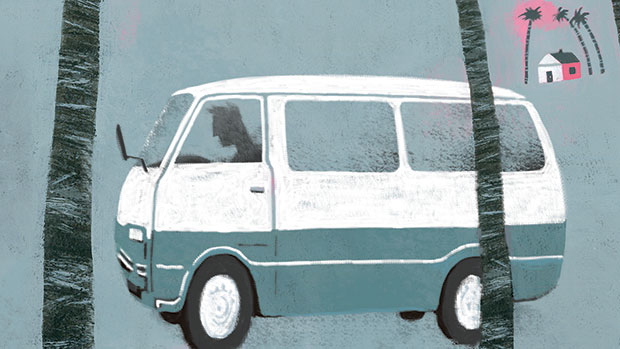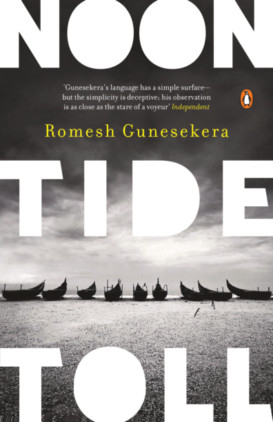
Noontide Toll
By Romesh Gunesekera
New Press, 256 pages
$24.95
At first glance, “Noontide Toll” is the archetypal Romesh Gunesekera book. The familiar island landscapes of the “Prisoner of Paradise” or “Heaven’s Edge” are here. So are the delicate prose, the wry humour and the undertone of violence that runs throughout the plot.
But the sparse stories of “Noontide Toll” are strung together by the voice and eyes of Vasantha — a van driver for hire who travels across the post-war north and the relatively peaceful south in Sri Lanka, and the record of his journeys form the backbone of the book.
And that’s a new departure for the Booker-nominated Gunesekera, whose first collection of stories — “Monkfish Moon” — was published in 1992.
“Noontide Toll” is a disparate collection of stories unified by the voice of Vasantha, at once a metaphor and a narrator — who reflects the pains and anxieties of the island nation struggling to acknowledge its past. The book is arranged in two sets (north and south) of six stories each, with an introduction that signals the beginning of Vasantha’s journey (“Full Tank”) and a coda that signals its end (“Running on Empty”).
In between, “Noontide Toll” captures myriad experiences. Vasantha encounters a priest trying to confront a war criminal in an army camp in “Mess”, one of the stories based on his journeys in the north.
In another dark and seemingly unending journey, Dr Ponnampalam, an exiled Tamil father, comes back to relive the memories of his childhood villa in “The Deadhouse”. A failed bid to reconcile with the past follows — “It was a refuge once, but even in those days the place seemed haunted. Can you imagine what it would be like to live there now?” the doctor asks his son.
In “Folly”, while transporting Mrs Cooray back to her hotel, driving on the A9 to Jaffna, Vasantha observes: “My responsibility was only to bring these people to the fort, and take them back without mishap. What they saw, what they heard, what they thought and what they remembered was their problem, not mine.”
On the southern side of the country, Vasantha’s experiences are no less dramatic: a guilt-ridden general in “Humbug”, for instance, seeks forgiveness. Another man, in “Turtle”, is simply thankful for surviving: “In this world, we must be the lucky ones if we survive from one day to the next.”
And in “Janus”, Vasantha reflects: “When we first heard the war was over, we believed a line could be drawn between the mistakes of the past and the promise of the future. One was the place you had been, the other was the place you were going to. But as a driver, I should have known better. To go from one to the other, you need a road. And a road is nothing if it doesn’t connect.”
The uniqueness of “Noontide Toll” aside, the collection also boasts of typical Gunesekera hallmarks.
There are none of the complicated literary devices such an arrangement of stories could be prone to. Instead, Gunesekera relies on the sheer simplicity of the stories and their message to create a powerful narrative. Each story is carefully nurtured and meticulously crafted, with a sublime subtext of violence ready to explode.
Vasantha’s journey is a timely one as well: it comes nearly 10 years after the devastating Indian tsunami that swept away more than 200,000 people, including more than 31,000 Sri Lankans, and five years after the end of the civil war in the country.
But unlike other war-based works of fiction on Sri Lanka, the true beauty of “Noontide Toll” lies in that it’s neither an endorsement of the horrors of violence in the island nor is it a patronising human rights sermon on a country struggling to find its feet.
Instead, Gunesekera weaves with a masterly thread sublime tales of rediscovery, guilt and empathy — symbolic tales which are at once cathartic and brimming with tensions of post-war reconciliation.
As Emerson said, life is a journey and not a destination — and it is Vasantha’s journeys across the troubled nation and not his destinations that capture the true story of today’s Sri Lanka.










